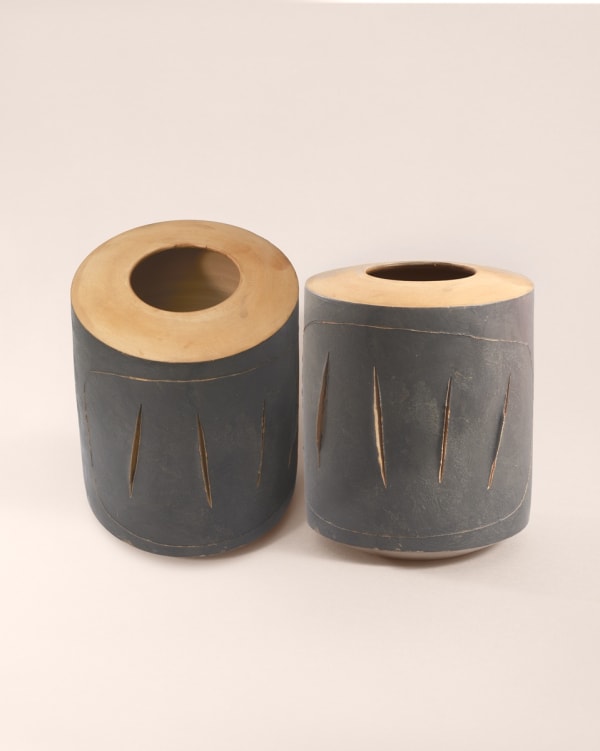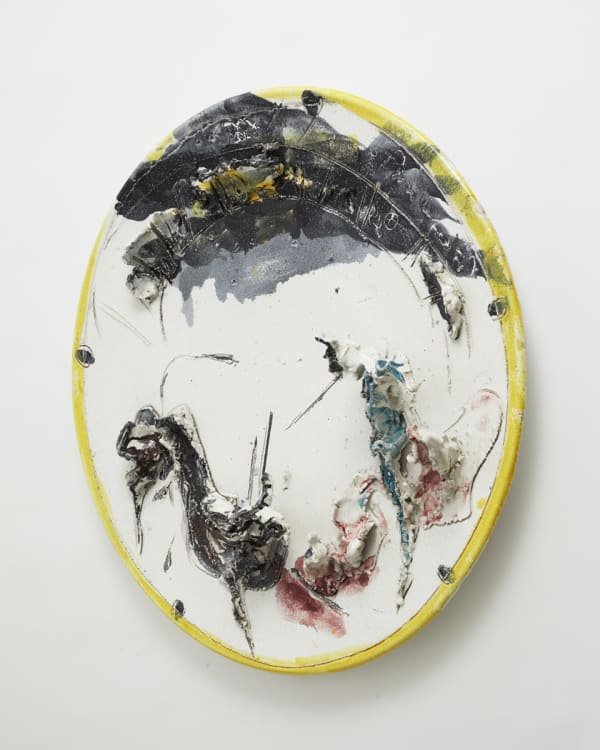Design Museum | Blommers & Schumm: 'Lucio Fontana'
Lucio Fontana (1899 – 1968) is one of the most important avant-garde artists of the twentieth century and still a source of inspiration for artists, designers and architects. Fontana is best known for his iconic cut paintings. But his oeuvre extends much further than that. He was originally a sculptor, made spatial installations, collaborated with architects and designed jewellery.
The collection of jewellery and ceramics of Design Museum Den Bosch (the largest collection of work by Fontana in the Netherlands) forms the basis of the exhibition Lucio Fontana - The conquest of space in which Fontana's revolutionary Concetto Spaziale (spatial concept) is central. In the exhibition the collection is supplemented with paintings, sculptures and light objects from indoor and abroad. Fontana's Ambienti spaziali are back in for the first time since 1967 to see the Netherlands. With the agreement of the Fondazione Lucio Fontana, these groundbreaking spatial installations from the middle of the last century reconstructed in the museum. As a visitor you literally enter the space(s) from Fontana.
Especially for the exhibition, the photographer duo Anuschka Blommers and Niels Schumm photographed the works by Fontana from the Design Museum Den Bosch collection. The result is an alienating, evocative photo series with a contemporary view of Fontana's work.
Spatial total experiences
Many people know Lucio Fontana mainly from his paintings. Less known is that he pioneered spatial installations as early as the 1940s made, his Ambienti Spaziali. In these installations Fontana integrated architecture, design, sculpture, painting and drawing. Fontana used new technical inventions such as fluorescent paint, black light and neon light. The Ambienti are three-dimensional paintings, spatial drawings or sculptural architecture. Fontana made no fundamental distinction between the various visual disciplines. On the contrary: he tried to unite them in all his work. He advocated such an art form that, by making use of all the new possibilities, could relate to modern times. For the first time since 1967, these spatial installations will be presented in the Netherlands again.
The absolute apotheosis
The starting point of the exhibition is the collection of Design Museum Den Bosch. This consists of twenty pieces of ceramics and jewellery, making it the largest collection of work by Fontana in the Netherlands. For the exhibition, the collection supplemented with highlights from Fontana's oeuvre from home and abroad. Such as the borrowed unique drawings and ceramics from the internationally renowned Galerie Karsten Greve (St Moritz, Paris, Cologne). An absolute apotheosis in Fontana's work and a highlight in the exhibition is the egg-shaped painting La fine di Dio from 1963, from a private collection. The black perforated canvas of this painting is covered with a star-like glitter. It is an astral egg in which Fontana expresses an idea about infinity of space and the inability to cope in an age of technological progress and the first space travel to imagine God as an old man with a gray beard. The exhibition is an unique and one-off opportunity to present this work in the Netherlands.
An all-encompassing concept of space
What connects all the works in the exhibition is that they represent Fontana's quest for showing new concepts of space. With his holes in the canvas he broke through the idea of flat surfaces and the illusion of spaciousness that traditional painting try to mimic. With his spatial installations, paintings, ceramics, sculptures and jewellery he liberated visual art, design and architecture from their traditional boundaries. Taken together, all these works provide insight into Fontana's conquest of space in an era when humanity is exploring outer space.
A new look at the collection
Especially for this exhibition, the museum has asked photography duo Anuschka Blommers (1969) and Niels Schumm (1969) to photograph the collection of works by Fontana. Blommers and Schumm are best known for their fashion and portrait photography for leading magazines such as Vogue, Vanity Fair, Wallpaper, Dazed & Confused, and Another Magazine. Their photography is also considered as autonomous work, and is on display at for instance the Groninger Museum. Just like Fontana, Blommers and Schumm are on the border of visual and applied art. With this assignment, the museum asks two contemporary image makers to examine the work of Fontana. The result is an alienating, evocative photo series that is completely contemporary and puts Fontana's work in a new light. The photos will be on display at high during the duration of the exhibition light boxes in the hall of the museum.
Publication
In collaboration with the publisher nail010 the Design Museum Den Bosh has published a book about the exhibition. With texts by curator Colin Huizing and art historian Paolo Campiglio as well as an overview of all works in the exhibition. In addition, the publication contains all photos that Anuschka Blommers and Niels Schumm turned the collection into works by Fontana from the museum. The book is for sale at the museum for € 24.95, at the better bookstores and on the nai010 website.




















